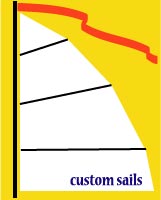
 Custom Search
|
|
| sails |
| plans |
| epoxy |
| rope/line |
| hardware |
| canoe/Kayak |
| sailmaking |
| materials |
| models |
| media |
| tools |
| gear |
 |
 |
| join |
| home |
| indexes |
| classifieds |
| calendar |
| archives |
| about |
| links |
| Join Duckworks Get free newsletter Comment on articles CLICK HERE |
|
|
| July Treasure Chest |
Send
items to chuck.leinweber@gmail.com for inclusion here next month. |
Access PlatesFor leveling my jig, I cut a screw slot in a couple of carriage bolts. I drilled a hole undersized in the end-of-jig gussets and let the carriage bolts make their own threads through the drilled hole in the wood. I put my long level on the jig, a screwdriver in the bolt slot and level the jig like tuning a guitar... spot on. Ray Whitney Trolling Motor Volt MetersI writing about something I have not seen a lot of on duckworks and that's about the use of add-on volt meters with trolling motors, like to accurately measure the charge of the battery. This is when the trolling motor batteries don't have an on board charging system such as a petrol motor. I had to do my own research on this, learning a little bit as I went along. Volt meters can be very expensive, but I managed to get one off EBay for $50. It's best to get a voltmeter that goes down to one or two decimal places. The average voltage of a battery cell is about The battery company has told me that my deep cycle battery is only 20% charged when the volt meter reads 12.0 volts and that I shouldn't run it at less than that. So the voltage that is useful to me, in respect to knowing how much juice is left in the cells, lies between 12.0volts and 12.6volts. The battery company has also advised me that I need to turn off the trolling motor for a minute or two before taking a reading, if I want to get an accurate result. This becomes clear when the voltage sometimes falls below 12.0 volts while the trolling motor is running. There is another piece of essential equipment for this system and that is, a multistage charger, as an ordinary car battery charger is not suitable for charging deep cycle batteries. Furthermore it is best to have a fuse or circuit breaker in the system to protect the batteries from a short circuit between the wires that go, to and inside the trolling motor. I am running two, wet cell, 6volt, Century-Yuasa, fork lift batteries, connected in SERIES. This means, the negative terminal of one battery is connected to the positive terminal of the other and their combined voltage is 12volts. It is a fairly uncommon system as it is hard to get 6volt batteries that are 15kg and have an output of 105amp/hr. The battery is called type 12 A. I have found my trolling motor very useful because it has instant power to avoid ferries and shipping, around the boat ramp where I have to launch. The voltmeter gives me a bit of extra confidence when I start to get into the deep water and have to think about coming home again. Charles Rablin Installing BreasthooksThis is a very clever way of installing breasthooks. by Warren Messer
|

